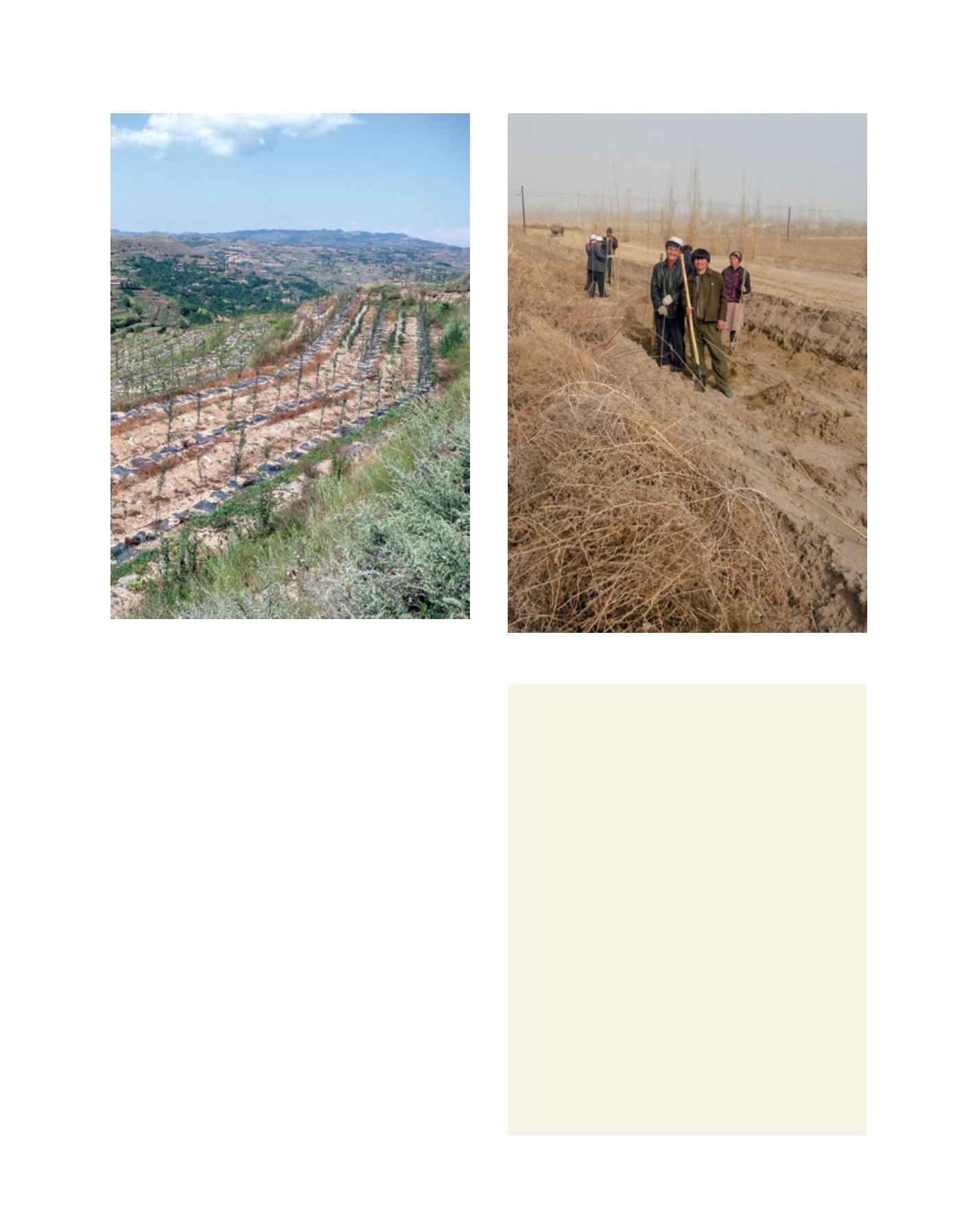

[
] 28
Integrated Ecosystem and Agriculture Development Project,
the Forestry and Ecological Restoration Project in three
North Western Provinces, and the Shaanxi Weinan Luyang
Integrated Saline Land Management Project. Total investment
by all partners for assistance, grants, and investment projects
under the partnership is about US$800 million.
Since 2014, the partnership has entered a new phase as it
seeks to build on successful capacity and institutional devel-
opment. With the support of ADB, a new
Integrated Strategy
for Sustainable Land Management in Western PRC for 2014-2023
has been prepared. Critical new challenges include adapt-
ing to climate change, developing public-private partnerships
and innovative financing mechanisms, keeping updated with
new sustainable land management concepts, and improving
coordination with other programmes such as the PRC-GEF
Biodiversity Partnership Framework and the UNCCD.
6
A key
lesson learned is that scaling up sustainable land management
is a complex process, and time, patience and persistence is
needed to embed cross-sectoral cooperation across govern-
ment agencies. Furthermore, greater levels of investment are
needed and resources will need to be channelled and supported
through innovative cooperation mechanisms that have been
initiated over the past decade. With this approach the part-
nership will continue to strive towards its long-term goal of
improving sustainable land management in dryland areas that
benefit poor people.
Pilot projects: better animal husbandry and
sustaining biodiversity
Among the major causes of land degradation in the pilot sites are
the conversion of marginal land to pasture and overgrazing by
goats and sheep. Because penning animals can have significant
socioeconomic and environmental benefits, the partnership
helped to popularize new breeds, feeding methods, weight-gain
technologies and the use of animal manure for biogas and fertilizer.
Farmers were encouraged to enrol in vocational training and to
rehabilitate their grazing areas. In response to declining fodder
and rainfall, livestock owners reduced their number of sheep and
fattened the remaining animals.
Jingbian County, Shaanxi province, was given 50 sheep of an
improved breed whose lambs can be weaned in two to three months
instead of the usual 10 months, and can reach an average weight
of 80 kg in four months, instead of eight. Villagers anticipated high
demand for the improved lamb and stud services. Farmers began
focusing on the quality of their livestock rather than quantity.
The Hudan watershed in Huangyuan County, Qinghai province,
was confronted with upstream and downstream water conflicts,
dying local tree species, significant reduction in biodiversity and
inappropriate agricultural and grazing practices. Hillside grazing
was partially banned and steps were taken to restore vegetation.
The partnership trained farmers in sound ecological practices and
the use of renewable energy and helped them start alternative
livelihood activities. The quality of local soil and water improved,
and native plants have regrown. Villagers participating in monitoring
activities reported the return of several species of native birds for
the first time in many years.
Replacing annual crops with perennial and more climate resilient economic
trees in Gansu province
Planting shelter belts in Xinjiang Uygur autonomous region
Image: Frank Radstake
Image: Frank Radstake
L
iving
L
and
















